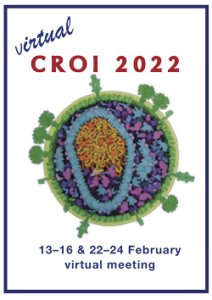CROI 2022: Switching to dolutegravir for adults on stable PI-based second-line ART
1 June 2022. Related: Conference reports, Treatment strategies, CROI 29 (Retrovirus) 2022.
Polly Clayden, HIV i-Base
 Switching from a boosted protease inhibitor to dolutegravir appears safe and effective for HIV treatment-experienced adults with undetectable viral load and no previous exposure to integrase inhibitors.
Switching from a boosted protease inhibitor to dolutegravir appears safe and effective for HIV treatment-experienced adults with undetectable viral load and no previous exposure to integrase inhibitors.
This is based on findings from the Second-line Switch to DTG (2SD) study presented at CROI 2022.
This study is an open-label, randomised, controlled, non-inferiority trial, conducted at four sites in Kenya. Eligible participants were 18 years of age and above, virally suppressed for at least 12 weeks before enrolment and on a second-line regimen of a ritonavir-boosted protease inhibitor (PI/r) plus two nucleoside reverse transcriptase inhibitors (NRTIs) for at least 24 weeks, and with no previous integrase inhibitor exposure.
Participants were randomised (1:1) to switch to DTG or continue on their PI/r. Both arms remained on their NRTIs. The primary endpoint was proportion of participants with viral load above 50 copies/mL at week 48 (intention-to-treat-exposed [ITT-E] population; non-inferiority margin of 4%).
Between February and September 2020, 795 participants were randomised and 791 were treated and included in the analysis: 397 in the DTG arm and 394 in the PI/r arm. All were black African and a median of 46 years of age, 524 (66%) were women. They had been on a PI/r for about five and a half years – the majority (approximately 80%) received boosted atazanavir. Baseline characteristics were similar in both arms. Participants were not assessed for prior resistance.
At week 48, the proportion with viral load above 50 copies/mL was 5.0% (20/397) and 5.1% (20/394) in the DTG and PI/r arms, respectively: difference –0.04% (95% CI: –3.09 to +3.02). This met the study non-inferiority criteria.
No participants with virological failure had detectable genotypic resistance to either DTG or PI/r.
Treatment-related adverse events (AE) occurred in 92 (23.2%) participants on DTG and 78 (19.8%) participants on PI/r. Grade 3 or 4 AEs were similar (5.8% vs 6.9% for DTG vs PI/r), with no treatment-related serious AEs in either arm. One (0.3%) in the DTG and 3 (0.8%) in the PI/r arm discontinued study drug for any AE. There were no significant differences between arms in any AE comparisons.
There was greater weight gain in the DTG vs PI/r arm: 2.1 vs 1.3% change from baseline (p=0.02).
comment
Switching people who are virally suppressed from PI/r-based second-line to DTG has not previously been investigated.
The shortcomings of PI/r-containing regimens (particularly for low- and middle-income countries) have been well-documented: high pill-burden, tolerability, toxicity, drug interactions (including with TB treatment) and cost.
So these results are welcome and might offer a useful option – even without knowledge of prior resistance.
No data was presented comparing NRTI backbones and just over half of the participants received tenofovir and 3TC in this cohort.
Reference
Ombajo L et al. A randomized trial of switching treatment-experienced adults from PI/r to DTG. CROI 2022. 12–16 February. Virtual. Oral abstract 136.
https://www.croiconference.org/abstract/a-randomized-trial-of-switching-treatment-experienced-adults-from-pi-r-to-dtg/ (abstract)
http://www.croiwebcasts.org/p/2022croi/croi/136 (webcast)

